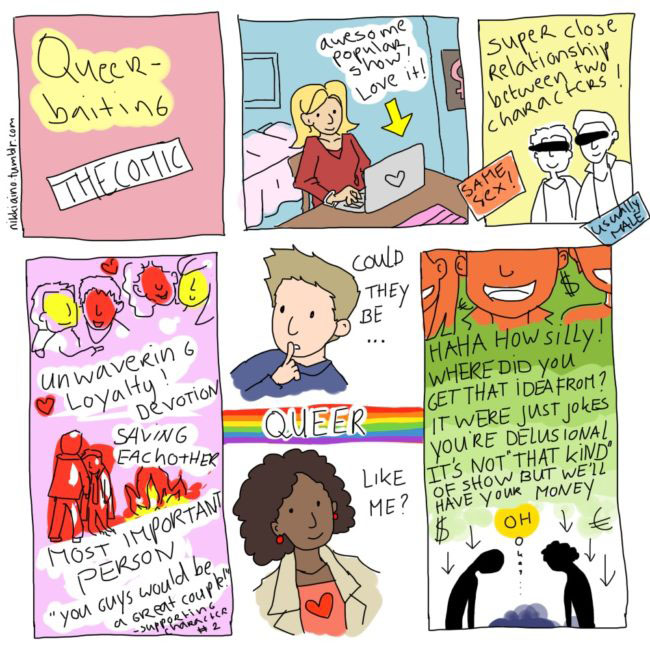Queerbaiting… I’m tired of it
November 26, 2019
Queerbaiting. We have all been victims of it. Imagine that you are sitting and binge-watching a TV show. Two characters of the same sex are finally about to admit their feelings for one another and you’re ecstatic. LGBT representation is finally happening in this overall heteronormative show. Then they don’t get together. Instead, they end up in-hetero-love – and you’re forced to endure more straight couples, alongside the 74 current heterosexual twosomes.
Yep, you’re thinking of a show that did this to you right now. By adding homoerotic subtext or erotic tension between two characters, usually leads, LGBTQ audiences are enticed to tune in, unaware that there was never an intention to elevate the subtext to an actual relationship. This leads to views and attention from the LGBTQ community without actual representation.
According to GLAAD’s (GLAAD is an American non-governmental media monitoring organization founded by LGBT people in the media.) “Where We Are On TV Report”, in the 2018-2019 TV season, there were 901 main characters on broadcast scripted primetime programming, and 58 (6.4 percent) were identified as gay, lesbian, bisexual, transgender and/or queer.
Like queer characters, queer viewers are a minority – and it’s thought that Queerbaiting is a way of appealing to them without alienating their main audience, who may be uncomfortable with openly queer characters, or who may not care about them. So, by Queerbaiting, writers and creators are able to appeal to the LGBTQ market, while avoiding any backlash from the homophobic market.
The lack of representation makes it seem as if LGBTQ characters are not worthy of good storylines and are only used for financial gain. Please just give us some representation in primetime television. We are people too, and we like watching happy (well-written) stories about people like us.


